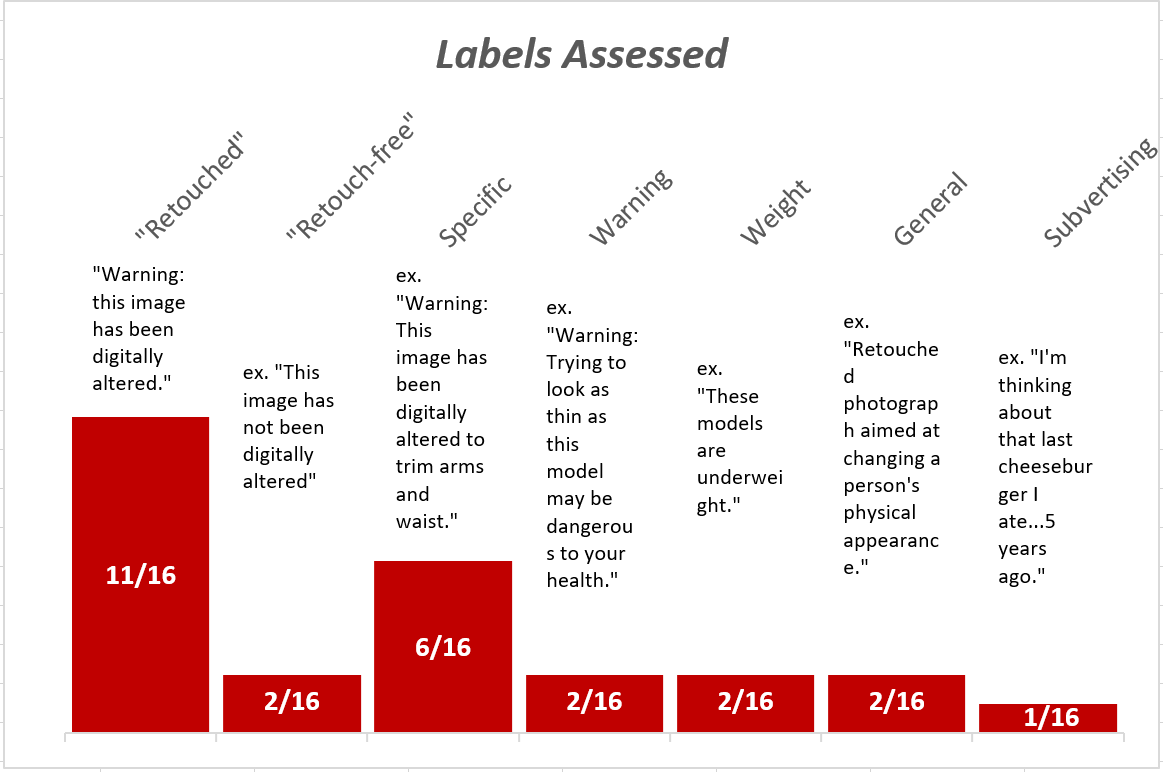“I’m just trying to lose weight.”
I cannot count the amount of times I have heard this statement in the past year, from the people around me, from myself. As a female young adult, a culture divided by body image seems especially relevant. “Too fat” is too common, “too thin” likewise. Perfection, inspired by inequitable comparison and largely media, becomes expectation. In turn comes a surge of consequences; individuals lose confidence, put their mental health at risk, and even endanger their physical health. So the [unrealistic/unhealthy/unwarranted] aspiration continues.
This summer, I worked with Francesca Giorgianni on a project exploring a niche subject – appending labels to images representing them as digitally modified versus retouch free – that has broad context and application. I am an engineering major, but through an applied psychology research project I still found a categoric type of meaningfulness. I led part one of two: an article review synthesizing existing literature on labeling images.
We approached the project with a few questions in mind:
- Do labels improve body satisfaction?
- Does type of label (see Fig. 1) change how the message of digital modification (or lack thereof) is interpreted?
- Can labels be both visible and practically enforced legislatively?
Analysis on current studies did not provide evidence that labels on retouched images had positive effect; in fact, for people with high trait or appearance comparison, some labels could have a significant negative effect. This comes at odds with recently-implemented legislation: France has mandated labels be added to retouched advertisements – without even affirming if this effort is beneficial. An analysis on present literature is thus especially relevant.
With this result in mind, I have summarized my own experience in several overarching questions:
- Does there exist an “easy” way to mitigate the bubbling impact of media on body satisfaction?
- How can societal expectations shift to support body satisfaction?
- How can individuals, across different levels of self-perception, be appealed to in ongoing conversation on body dissatisfaction?

